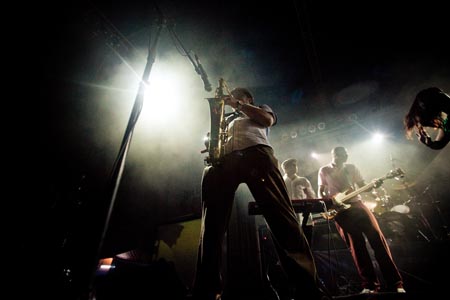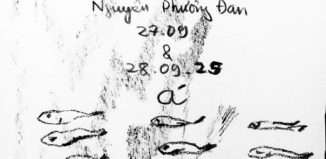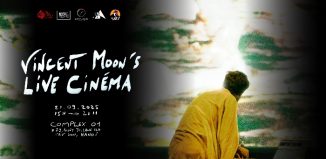Dengue Fever Hit Hanoi

From GI radio to Dengue Fever: the Khmer rock revolution
Dengue Fever are set to bring Hanoi a taste of Khmer Rock this month, which is fitting really, seeing as Vietnam had an accidental hand in creating it in the first place.
Khmer Rock was born during the years of the Vietnam War. To keep GIs happy, the American army was broadcasting radio shows of the latest music from the US. Revolutionary, psychedelic tracks by the likes of The Doors, Jimi Hendrix, and The Beatles were being pumped out over the airwaves and, like US fighter pilots, were going further than they were meant to be. These new sounds were getting picked up by the youth in Cambodia’s capital.
Phnom Penh at the time was pretty liberal. Controversial Prince Norodom Sihanouk conducted a corrupt and repressive regime yet, being a budding film-maker, had a soft spot for the arts. By all accounts the music scene flourished with talented musicians who would perform bread and butter traditional music by day before transforming into psyche-rock experimenters by night.

Chief among them was songwriter Sinn Sisamouth and singing sensation Ros Sereysothea. Imitating the music which spawned a cultural revolution in the developed world, the pair started carving out raucous Khmer classics which still sound fresh today. Chnam Oun 16 (I’m 16) ominously riffs its way into existence like The Sonics coming over all surf rock after a sleepless night in a garage; Khernh Sneh Khnom Teh (Have You Seen My Love) kicks off like a funk/ska hybrid; Today I Drink sounds like two drunk lovers wandering through the paddy fields in summer, while Reatrey Gno Gnit (Dark Night) is a relentlessly driving dance number from start to finish with a self-propelling guitar riff that sounds more like a kazoo, such was the (dire) quality of the equipment being used.
Army radio was chucking the kitchen sink of modern music at Cambodia and grateful musicians were catching everything and chucking it right back. Other standout tracks are more soulful, some are pop, or blues, or whatever else the musicians felt like plucking out of the airwaves on that particular evening. What stands out in them all is Ros’s voice. An illiterate girl from the countryside, she had sass to match her unending talent, yet also sings about darker topics with complete conviction in a manner reminiscent of Khanh Ly. Perhaps her most haunting performance is Anija Kmeng Kamprea (Sympathy for an Orphan) which, in its evocative vocal, has echoes of Nina Simone’s Strange Fruit.

Unfortunately, this era of creativity didn’t last long. When the Khmer Rouge took control in 1975, artists and musicians were among the first to be eliminated. All the leading lights from the era disappeared; some like Sinn Sisamouth are known to have been executed, while others like Ros had less certain fates. It is accepted that she did not survive Pol Pot’s revolution but the manner of her death isn’t clear. One report has her being driven off into the forest in an ox cart on a journey from which she never returned; another has her dying of malnutrition in a hospital just prior to the Vietnamese army’s over throw of the disturbing regime.
Such a cataclysm silenced Khmer Rock until the 90s when beat up vinyl of some of the recordings began to resurface. When Ethan Holtzman visited Cambodia in ’99, he heard a Ros Sereysothea track being played on a truck cassette player. When he returned to America he formed Dengue Fever, recruiting Ch’hom Nimol to front the band for an authentic Khmer Rock sound.

Since 2001, they’ve been performing covers of Khmer Rock classics alongside their own originals. Dengue Fever tracks work by keeping the energy and wanton abandon for genres that makes Khmer Rock eternally fresh. Its enduring quality is evident. If you stick a few Ros Sereysothea tracks on in a Phnom Penh bar today, it’ll still get every girl in the place dancing.
So when the US Embassy brings Dengue Fever back to Hanoi with CAMA on November 26, it’ll be worth making it down to the American Club to see a little bit of history coming full circle – and for a dance to the sound of two cultures meeting.
Words by Douglas Pyper
Photos by Aidan Dockery
[youtube]http://www.youtube.com/watch?v=E1yLKPyRSiI[/youtube]













